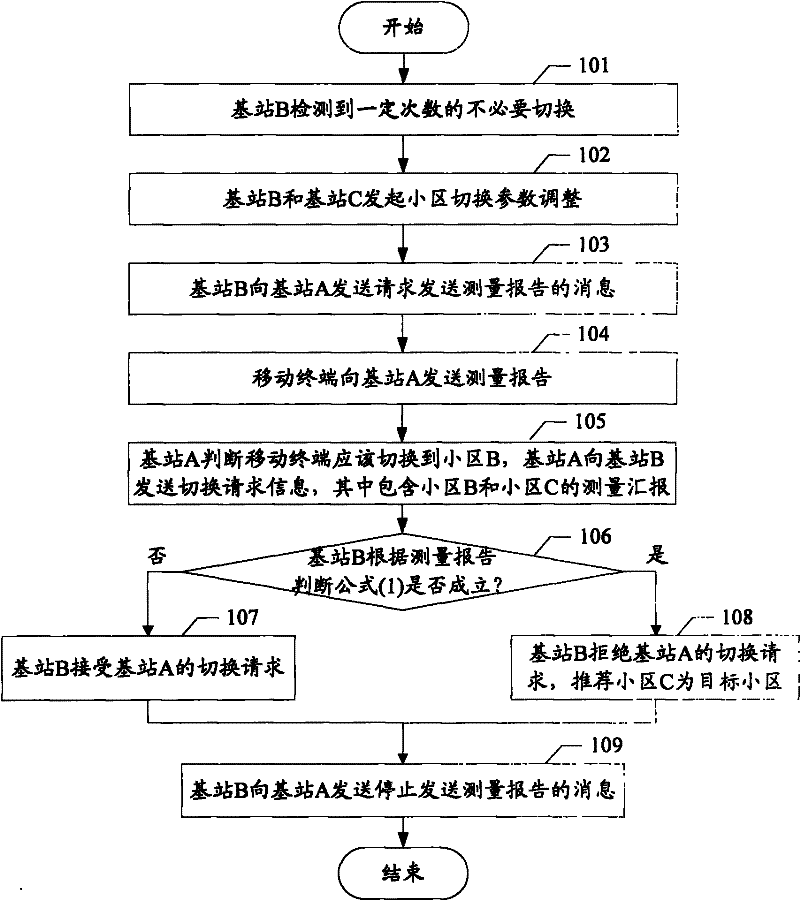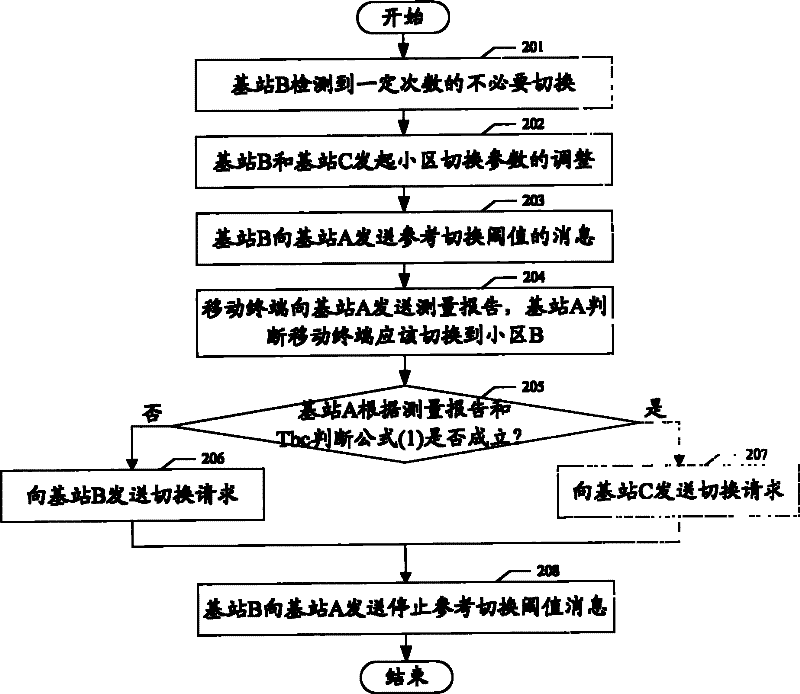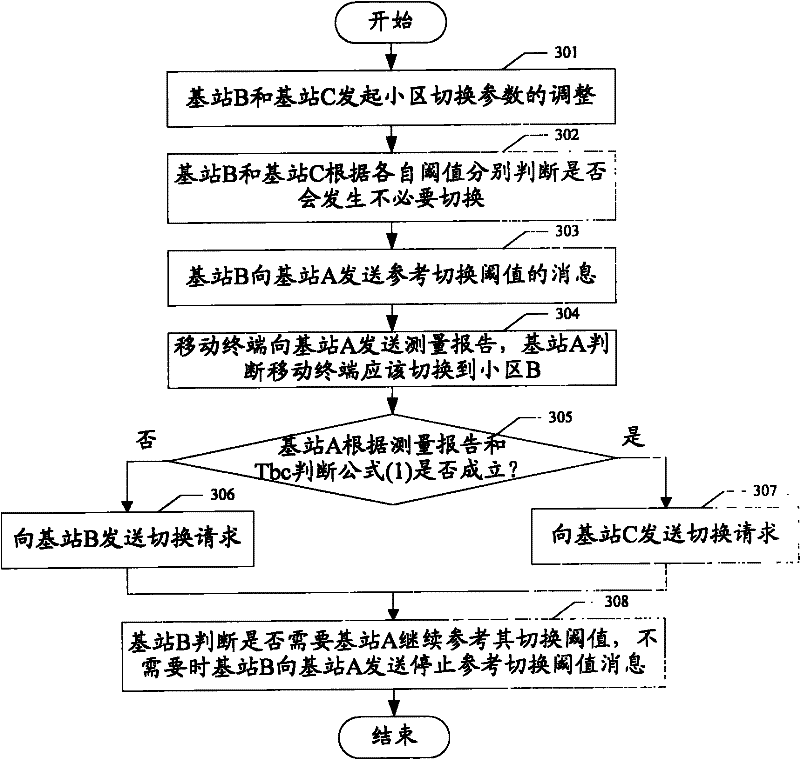Method and system for reducing unnecessary switching in LTE (Long Term Evolution) system
A necessary and cell handover technology, applied in electrical components, wireless communications, etc., to solve the problems of unoptimized handover parameters, unnecessary handover, and unreasonable configuration of handover parameters between cells
- Summary
- Abstract
- Description
- Claims
- Application Information
AI Technical Summary
Problems solved by technology
Method used
Image
Examples
Embodiment 1
[0032] Embodiment 1: scheme one
[0033] Such as figure 1 , when the base station B detects a certain number of unnecessary handovers, that is, the mobile terminal is handed over from cell A to cell B, and then quickly handed over to cell C after the handover is successful. First adjust the cell handover parameters of cell B and cell C. If the number of unnecessary handovers is still not reduced after the adjustment, base station B requests base station A to send a measurement report message. After that, base station A includes the relevant measurement report of the user in the handover request. . Base station B judges whether to accept the handover request according to the handover request message sent by base station A, if it accepts the handover request, it returns a handover request confirmation message, if it does not accept the handover request, it returns a handover request failure message, and in the handover request failure message Contains information about recommend...
Embodiment 2
[0062] Embodiment 2: scheme two
[0063] by figure 2 and image 3 For example, when cell handover parameters are adjusted in cell B and cell C, the base station decides whether to send the corresponding cell handover parameters to a public neighboring base station (for example, the control base station of cell A) according to the adjustment direction of the cell handover parameters. For example, if base station B finds that the handover threshold from cell B to cell C has been lowered, it can predict that the mobile terminal in cell A, which is a common neighbor cell of cell B and cell C, is likely to handover successfully when handing over to cell B. Afterwards, it is quickly switched to cell C, so base station B sends to base station A the handover threshold from cell B to cell C. The base station A may determine the target cell of the handover user according to the handover threshold from the cell B to the cell C. Base station B can judge whether base station A continue...
Embodiment 3
[0081] image 3 It is the method processing flowchart of the embodiment of the present invention 3, and concrete steps are as follows:
[0082] Step 301, base station B and base station C initiate handover threshold negotiation to adjust Tbc and Tcb;
[0083] In step 302, base station B and base station C determine whether unnecessary handover will occur according to their adjusted handover thresholds. That is, base station B judges whether it is possible to switch from cell A to cell B and then immediately to cell C according to Tbc, and base station C judges whether it is possible to switch from cell A to cell C and then immediately to cell B according to Tcb;
[0084] Step 303, assuming that base station B determines that unnecessary handover may occur (for example, Tbc is adjusted down to a certain threshold), base station B sends a message referring to the handover threshold to base station A, and the message includes the ECGI of the handover source cell, that is, the EC...
PUM
 Login to View More
Login to View More Abstract
Description
Claims
Application Information
 Login to View More
Login to View More - R&D Engineer
- R&D Manager
- IP Professional
- Industry Leading Data Capabilities
- Powerful AI technology
- Patent DNA Extraction
Browse by: Latest US Patents, China's latest patents, Technical Efficacy Thesaurus, Application Domain, Technology Topic, Popular Technical Reports.
© 2024 PatSnap. All rights reserved.Legal|Privacy policy|Modern Slavery Act Transparency Statement|Sitemap|About US| Contact US: help@patsnap.com










